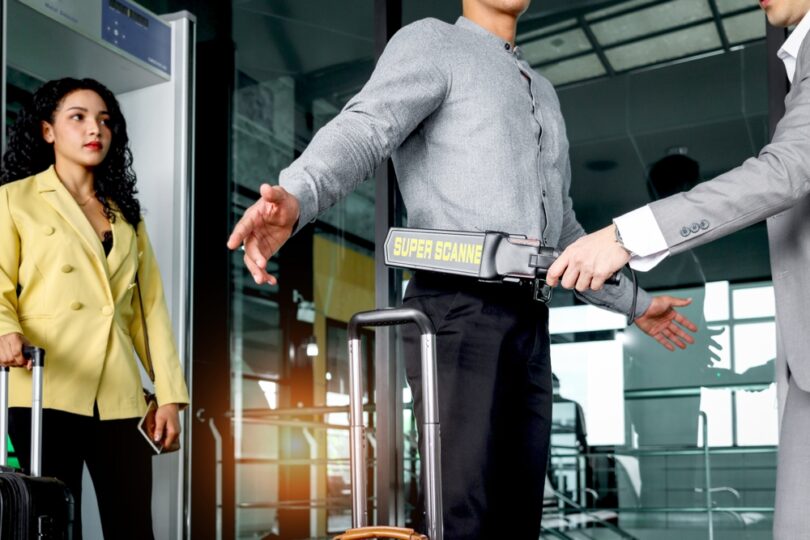If you haven’t flown in a while, you might be surprised by some of the changes at airport security, even if you just last traveled a few months ago. While many of us are familiar with the usual requirements, like removing shoes and disposing of prohibited liquids, there’s always the chance of running into fellow travelers who are less acquainted with TSA regulations.
Even seasoned flyers may grumble when asked to separate their food items from their bags or remove larger electronics for screening. To help ensure you avoid delays and can breeze through security, we’ve compiled a refresher on the most common items found in carry-on luggage and the latest TSA rules regarding each. Whether it’s liquids, powders, electronics, or snacks, understanding the current guidelines can make your travel experience smoother and more enjoyable.
Ready to brush up on the essentials before your next adventure?
Liquids, Gels, Etc.
 The TSA regulations surrounding liquids, gels, aerosols, creams, and pastes in carry-on luggage have remained consistent over the years. Passengers are still required to keep these items in a clear, resealable plastic bag with a maximum capacity of 1 quart. Each traveler is allowed one such bag, and all containers within must hold 3.4 ounces (100 milliliters) or less. When you reach the security checkpoint, you’ll need to remove this clear plastic bag from your carry-on and place it in a separate bin for screening.
The TSA regulations surrounding liquids, gels, aerosols, creams, and pastes in carry-on luggage have remained consistent over the years. Passengers are still required to keep these items in a clear, resealable plastic bag with a maximum capacity of 1 quart. Each traveler is allowed one such bag, and all containers within must hold 3.4 ounces (100 milliliters) or less. When you reach the security checkpoint, you’ll need to remove this clear plastic bag from your carry-on and place it in a separate bin for screening.
While the basic rules are straightforward, there are exceptions for certain items like formula, milk, and juice for infants, as well as essential medications. If you have any of these items in larger quantities, it’s important to inform the TSA agent at the checkpoint. Remember to check your carry-on for any beverages or larger liquid containers that could hold you up during security. Being aware of these guidelines will help you avoid having to dispose of items and ensure a smoother travel experience.
Powders
The TSA’s policy on powders in carry-on luggage continues to allow travelers to bring up to 12 ounces (about 350 milliliters) of powdery substances. This includes items like protein powder, baby powder, makeup powders, and other similar products. However, if you’re carrying more than 12 ounces, you should be prepared for additional screening at the security checkpoint, as larger amounts may require further inspection. Travelers will likely need to separate these powdered items from their bags, just as they do with liquids.
It’s a good idea to consider packing some of your powders, particularly large quantities, in checked luggage to avoid potential delays. If TSA officers cannot clearly identify the powder during screening, you may be asked to dispose of it or place it in your checked bags. Being mindful of these powder guidelines will help ensure you move smoothly through security without unnecessary hassle.
Electronics
 The TSA still requires passengers to remove larger electronic devices from their carry-on bags for screening. This includes laptops, tablets, and e-readers; any device larger than a cellphone must be placed in a separate bin at the security checkpoint. This rule helps facilitate a thorough inspection of these items.
The TSA still requires passengers to remove larger electronic devices from their carry-on bags for screening. This includes laptops, tablets, and e-readers; any device larger than a cellphone must be placed in a separate bin at the security checkpoint. This rule helps facilitate a thorough inspection of these items.
While personal care electronics such as hairdryers and electric shavers do not require removal, it’s wise to have your larger devices easily accessible to speed up the screening process. As security protocols may differ by airport, being prepared can help streamline your experience and reduce potential delays.
Related: How to Pack Light No Matter the Occasion
Food
While most food items are permitted in carry-on bags, the way they are screened can vary by airport. The TSA does not have a strict policy requiring food items to be removed from bags for screening, but passengers may still be asked to do so if the items obstruct X-ray images. To avoid any delays or additional screening, it’s a good idea to proactively separate food items and place them in bins.
Before packing your snacks, it’s essential to check the TSA’s online database for specific food items to ensure they are allowed. Keep in mind that certain foods, like peanut butter, may fall under the 3.4-ounce liquid limit, so be mindful of portion sizes. By being aware of these guidelines, you can enjoy your travel snacks without worry and help ensure a smoother passage through security.
FAQs:
Q: Can I bring food from outside the U.S. on my flight?
A: Generally, travelers can bring food, but some items like fresh fruits, vegetables, and meats may be prohibited. Always check the specific regulations for your destination country before traveling.
Q: What should I do if my liquids exceed 3.4 ounces?
A: If your liquids exceed the limit, consider transferring them to smaller containers or packing them in your checked luggage. Be sure to comply with TSA regulations to avoid disposal at security.
Q: Are there any exceptions to the electronics removal rule?
A: While most larger electronics must be removed, some airports may have advanced screening technology that allows certain devices to remain in bags. Always follow the instructions given by security personnel.
Q: Can I carry medication in my carry-on bag?
A: Yes, you can bring medication in your carry-on. It is recommended to keep medication in its original packaging and inform TSA agents if you have larger quantities.
Q: Are there any restrictions on frozen foods?
A: Yes, frozen foods are generally allowed, but they must be solid when passing through security. If they are partially thawed or leak, they may be subject to additional screening or disposal.
Q: Can I bring baby food and formula on board?
A: Yes, baby food, formula, and breast milk are allowed in reasonable quantities. You should inform TSA agents at the checkpoint for proper screening.
Q: What items are prohibited in carry-on luggage?
A: Prohibited items include weapons, explosives, flammable liquids, and other dangerous materials. Always check the TSA website for a complete list to ensure compliance.
What other TSA rules were you surprised to find out when you went through security? Share your experience with us in the comments below!








